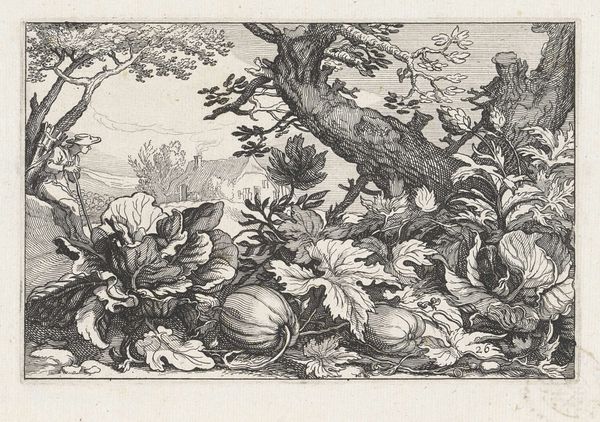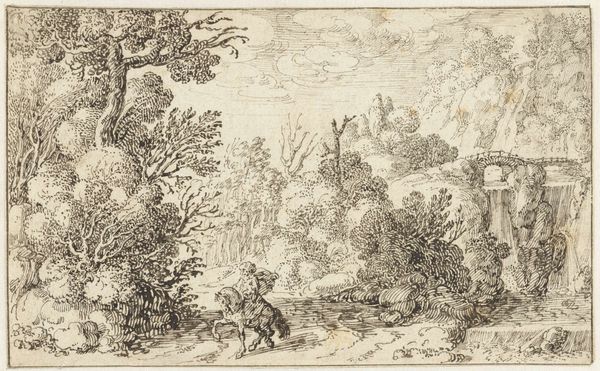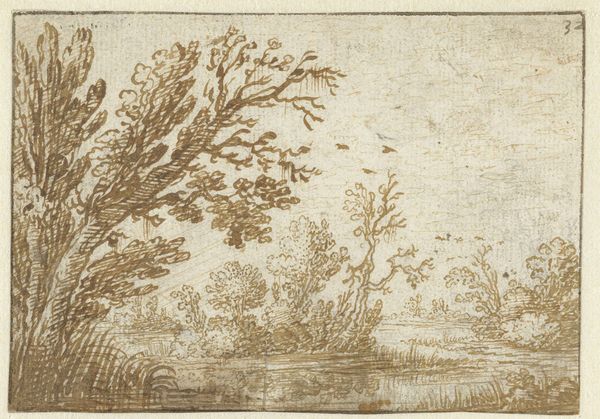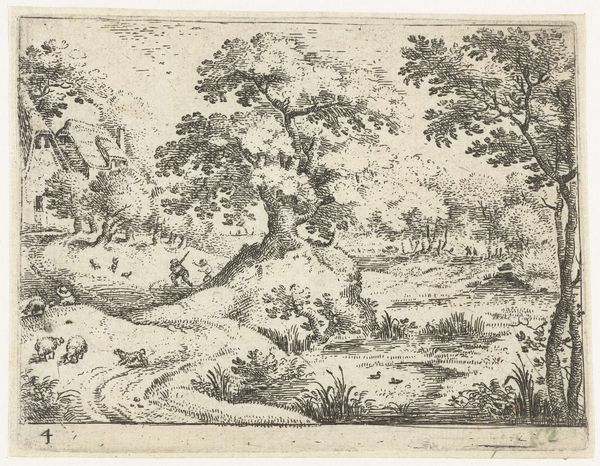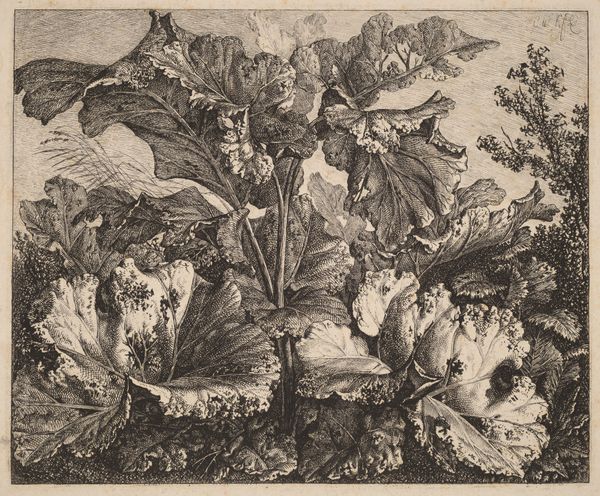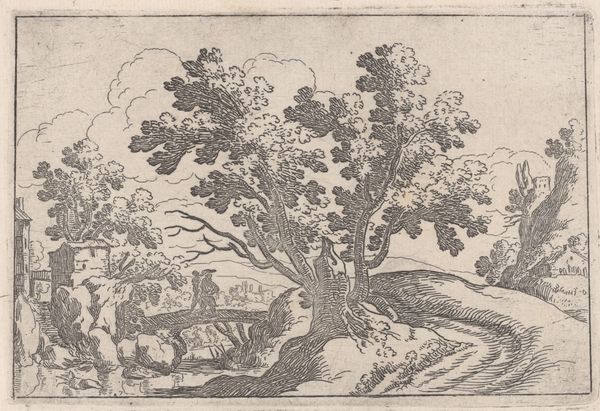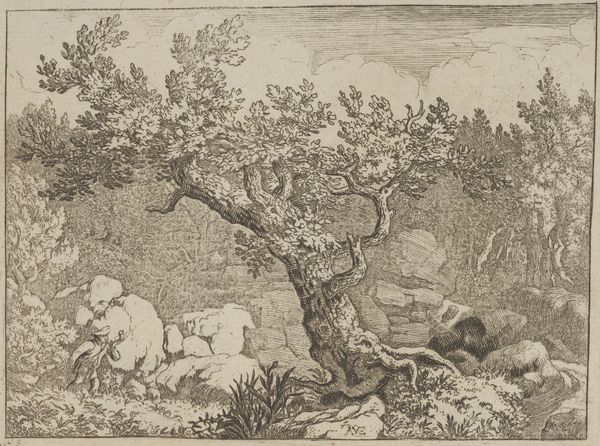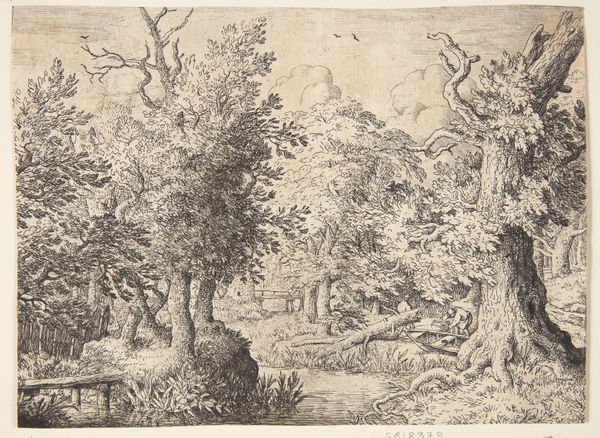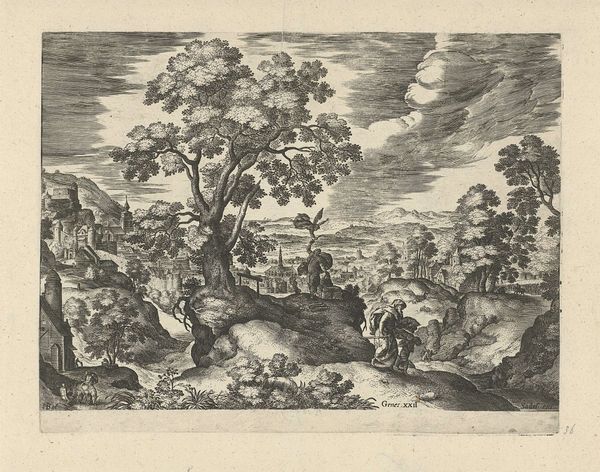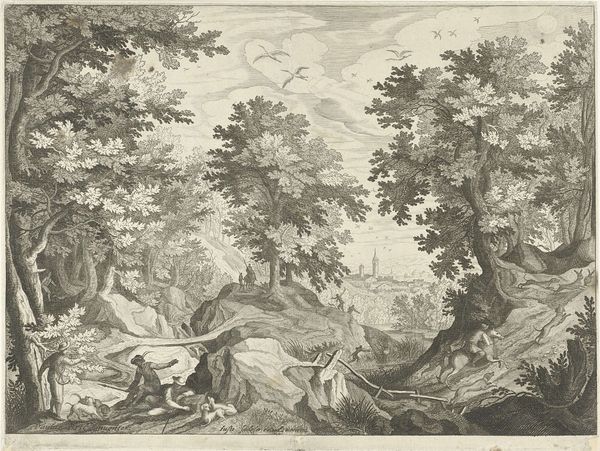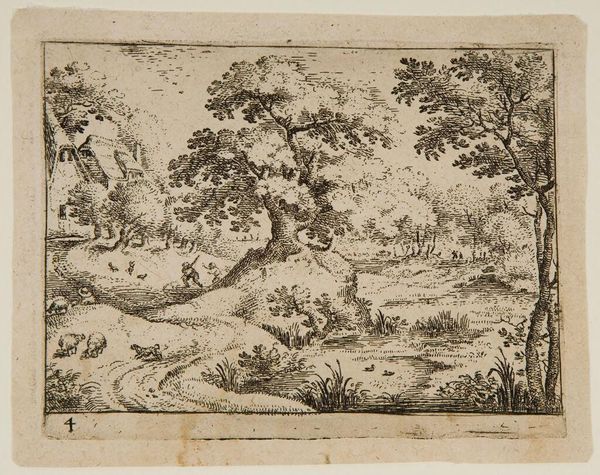
drawing, print, etching, pen, engraving
#
drawing
#
ink drawing
#
pen drawing
# print
#
pen illustration
#
pen sketch
#
etching
#
landscape
#
plant
#
pen
#
genre-painting
#
northern-renaissance
#
engraving
#
realism
Dimensions: height 154 mm, width 242 mm
Copyright: Rijks Museum: Open Domain
Curator: Look at this beauty! It’s entitled "Landscape with Pumpkins and Cabbages," crafted in 1614 by Boëtius Adamsz. Bolswert. You can see the meticulous detail that printmaking at that time allowed. What strikes you initially? Editor: Honestly? My first thought is… "What a wonderfully odd still life!” The close-up of all the vegetation gives a slightly surreal feeling. All the shapes and textures are so alive. Curator: It’s interesting you call it a still life. In art historical terms it definitely presents as a landscape, and was intended to. The artist uses a high horizon line, pushes it up high to showcase the immensity of nature. We’re dealing with a cultural context where landscape was not merely backdrop, but laden with social, economic and even spiritual implications. Editor: True! And that one solitary figure perched way in the distance is kind of endearing. Like, "Yeah, yeah, monumental nature…but I’m still here, chilling by this tree!" Makes me wonder who that person is? Is it someone we are supposed to relate to in a certain way? Curator: It may function on multiple levels, a commentary on labor perhaps, rural life, a mediation on the contrast between the everyday and the sublime. Gender would likely play a role too. And in this period there were also ideas related to agricultural bounty, the notion of paradise found in the abundance of the earth... Editor: That makes me feel like reaching out and touching the cabbage. Imagine those colours! I can almost smell that rich soil. So interesting how Bolswert turned ordinary vegetables into something epic and a tad… spooky? Maybe it’s the lighting! Curator: Or maybe it’s the fact that in early modern society these weren’t “ordinary vegetables”. This speaks volumes about what was valuable. In contemporary discussions surrounding climate change and food security, the work can be interpreted as being surprisingly relevant, touching on concerns related to class, labor and agricultural resources. Editor: Gosh, you’ve certainly given me a lot to chew on, pardon the pun! I’ll never look at a pumpkin quite the same way again. Curator: Isn't it amazing how a seemingly simple drawing can open up such expansive landscapes of thought and discussion?
Comments
No comments
Be the first to comment and join the conversation on the ultimate creative platform.
